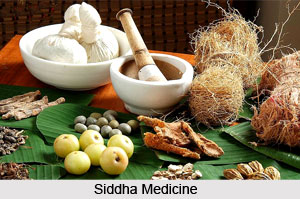 Haritaki is an herb that comes from the fruit of the Terminalia chebula tree. The chebulic myrobalan was highly extolled by the ancient Hindus as a powerful alterative and tonic. It has received the names of Pranada or life-giver and Sudha or nectar, Bhishakpriya or physician"s favourite and so forth. 7 varieties of haritaki are described by Sanskrit writers, the distinctions being founded upon the shape, colour and marks on the outer covering of the fruits. At present, however, 2 varieties only are recognised, namely, the large ripe fruit called "Haritaki" and the unripe dried fruit called "Jangi Haritaki".
Haritaki is an herb that comes from the fruit of the Terminalia chebula tree. The chebulic myrobalan was highly extolled by the ancient Hindus as a powerful alterative and tonic. It has received the names of Pranada or life-giver and Sudha or nectar, Bhishakpriya or physician"s favourite and so forth. 7 varieties of haritaki are described by Sanskrit writers, the distinctions being founded upon the shape, colour and marks on the outer covering of the fruits. At present, however, 2 varieties only are recognised, namely, the large ripe fruit called "Haritaki" and the unripe dried fruit called "Jangi Haritaki".
So highly esteemed was this plant by the ancient Hindus, that a mythological origin has been attributed to it. It is said that when Lord Indra was drinking nectar in heaven, a drop of the fluid fell on the earth and produced the Haritaki plant.
Quality of Haritaki
A good haritaki fit for medicinal use should be fresh, smooth, dense, heavy and rounded in shape. Thrown into water it should sink in it. Haritaki fruits weighing 4 tolas and upwards, are also considered fit for use, although they may not possess some of the above mentioned properties. The seeds are rejected and their coats only are used in medicine. Those fruits which have small seeds and abundant cortex are preferred.
Health Benefits of Haritaki
Chebulic myrobalans are described as laxative, stomachic, tonic and alterative. It is primarily used to increase metabolism and cleanse the blood. They are used in fevers, cough, asthma, urinary diseases, piles, intestinal worms, chronic diarrhoea, costiveness, flatulence, vomiting, hiccup, heart diseases, enlarged spleen and liver, ascites, skin diseases, etc. In combination with emblic and Belleric myrobalans, and under the name of "Triphala" or the three myrobalans, they are extensively used as adjuncts to other medicines in almost all diseases.
Dose of Haritaki in Medicine
2 or 3 chebulic myrobalans rubbed into a paste and taken with a little rock salt, act as a mild laxative. The following compound decoction called "Pathyadi Kvatha" is also much used as a purgative. Take chebulic myrobalans, pulp of Cassia fistula (aragbadha), root of Pricrorrhiza Karroa (katuki), root of Ipomoea Turpethum (trivrit) and emblic myrobalans, in equal parts, all 2 tolas and prepare a decoction in the usual way. Dose should be 2 to 4 ounces. Bengali practitioners now-a-days often add senna and rhubarb to the above preparation.
As an alterative tonic for promoting strength, preventing the effects of age and prolonging life, chebulic myrobalan is used in a peculiar way. One fruit is taken every morning with salt in the rainy season, with sugar in autumn, with ginger in the first half of the cold season, with long pepper in the second half, with honey in spring and with treacle in the too hot months. These adjuncts are supposed to agree best with the humours that are liable to be deranged in the different seasons. This old device for prolonging life is still believed in, and acted upon, by some superstitious elderly native gentlemen.
Numerous preparations of Haritaki for special diseases are described in books, such as the "Amrita Haritaki" for dyspepsia, "Danti Haritaki" for enlargements in the abdomen, "Bhrigu Haritaki" in cough, "Agasti Haritaki" in consumption, "Dasa Muli Haritaki" in anasarca, etc.
Amrita Haritaki is thus prepared; 100 large sized chebulic myrobalans are boiled in buttermilk and their seeds are taken out. 4 tolas each of long pepper, black pepper, ginger, cinnamon, plumbago root, root of Piper Chaba (chavika), the 5 salts, ajwain and the seeds of Seseli Indicum, (vanayamani), yavakshara, sarjikakshara, borax, asafoetida and cloves are reduced to powder and soaked for 3 days respectively in a decoction of tamarind and lemon juice. This mixture is introduced within the seedless myrobalans, which are then exposed to the sun and dried. One of these prepared myrobalans is directed to be taken every morning for the relief of various sorts of dyspepsia and indigestion.
Related Articles
Ayurveda
Ayurveda Medication
Elements of Ayurveda
Concepts of Ayurveda
Ancient Literature of Ayurveda
Sushruta Samhita




















